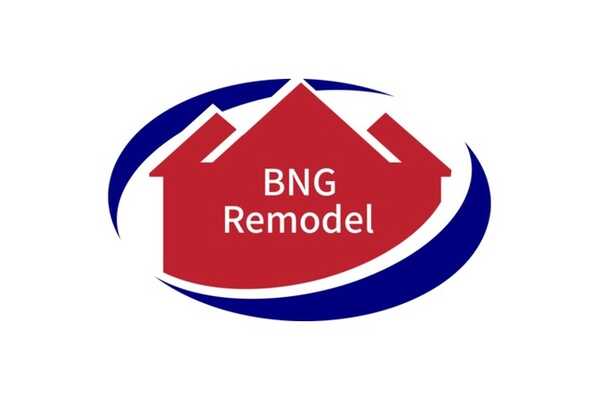Maximizing Your Home’s Value with a Kitchen Remodel
A kitchen remodel is often considered one of the most valuable home improvement projects. Whether you plan to sell your home or simply want to increase its overall appeal, a kitchen upgrade can make a significant difference. But how much value does a kitchen remodel genuinely add? This article will explore the factors that influence a kitchen remodel’s return on investment (ROI), helping you understand how to maximize the benefits.
The Return on Investment (ROI) for a Kitchen Remodel One of the main reasons homeowners invest in kitchen remodels is the potential increase in property value. On average, a minor kitchen remodel can recoup about 70-80% of its cost when you sell your home. However, the ROI depends on several factors, including the extent of the remodel, the housing market in your area, and the quality of materials used.
For example, a minor remodel that focuses on cosmetic changes, such as painting cabinets, updating hardware, and installing new countertops, typically offers a higher ROI than a full-scale renovation. This is because minor updates often cost less but still significantly impact the look and feel of the kitchen. In contrast, a major remodel that involves new cabinets, flooring, and appliances may recoup a smaller percentage of the cost, but can still enhance the overall value of your home, especially in competitive real estate markets.
The Impact of Location on Value The value added by a kitchen remodel can vary greatly depending on your location. In higher-end real estate markets, buyers tend to expect modern, updated kitchens with high-quality finishes and appliances. In these areas, a kitchen remodel can significantly increase the value of your home. Conversely, in more affordable housing markets, spending too much on a kitchen remodel might not yield as high of a return, as buyers may not be willing to pay extra for premium finishes.
It’s essential to research the housing market in your area before deciding how much to invest in a kitchen remodel. If homes in your neighborhood are selling quickly and at high prices, a kitchen remodel can help your property stand out and fetch a higher price. On the other hand, in a slower market, focusing on cost-effective updates may be a wiser choice.
Types of Kitchen Remodels: Minor vs. Major The type of kitchen remodel you choose will greatly influence how much value it adds to your home. As mentioned earlier, a minor remodel often yields a better return on investment than a major renovation. A minor kitchen remodel might include:
Updating cabinet doors. Replacing countertops with a more modern material. Adding a new backsplash. Upgrading old appliances with energy-efficient models.
These changes can make the kitchen look fresh and modern without a substantial investment.
In contrast, a major kitchen remodel might involve reconfiguring the layout, replacing cabinets, installing new flooring, and adding high-end appliances. While these updates can add luxury and functionality to the space, the higher cost of a significant renovation often leads to a lower percentage of return compared to a minor update. However, in luxury homes or competitive markets, a major kitchen remodel may still be worthwhile.
Increased Appeal for Homebuyers Even if a kitchen remodel doesn’t provide a 100% return on investment, it can still add significant value by making your home more attractive to potential buyers. The kitchen is often considered the heart of the home, and many buyers are willing to pay more for a house with a modern, updated kitchen. By making strategic upgrades, such as replacing old appliances with energy-efficient ones or installing new countertops, you can increase the appeal of your home and attract more interest from buyers.
A beautifully remodeled kitchen can also help your home sell faster, which is particularly important in competitive real estate markets. Buyers are more likely to make an offer on a house that requires little to no immediate work, and a well-updated kitchen can be a strong selling point.
Energy Efficiency and Long-Term Savings Beyond increasing your home’s value, a kitchen remodel can also improve energy efficiency, which can be an appealing feature for potential buyers. Replacing old appliances with energy-efficient models, installing LED lighting, and using eco-friendly materials can lower utility bills and reduce your home’s carbon footprint. These upgrades can add value by offering long-term savings to future homeowners, making your property more attractive on the market.
Energy-efficient homes are becoming increasingly popular, and investing in these upgrades can not only boost the value of your home but also enhance your quality of life while you live there.
Conclusion A kitchen remodel can add significant value to your home, but the exact amount depends on factors such as the scope of the project, the quality of materials used, and the real estate market in your area. On average, a minor kitchen remodel offers a higher return on investment than a major overhaul, and making energy-efficient upgrades can further increase your home’s value. While it may not recoup the total cost, a remodeled kitchen can make your home more appealing to buyers and improve its chances of selling quickly at a higher price.
Other Bathroom Remodeling Tips: Remodeling a Kitchen on a Budget: Tips and Ideas What Is the Best App For Remodeling?
The post Maximizing Your Home’s Value with a Kitchen Remodel appeared first on BNG Home .











